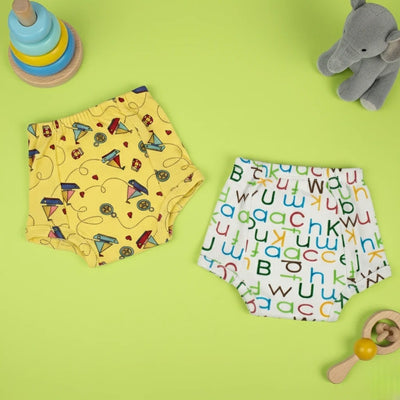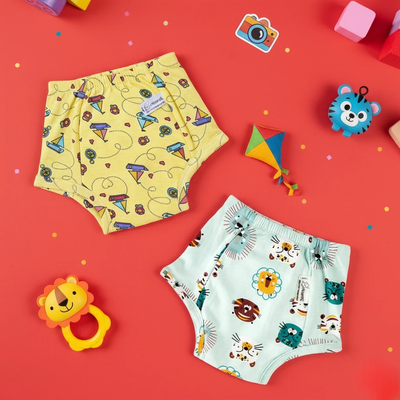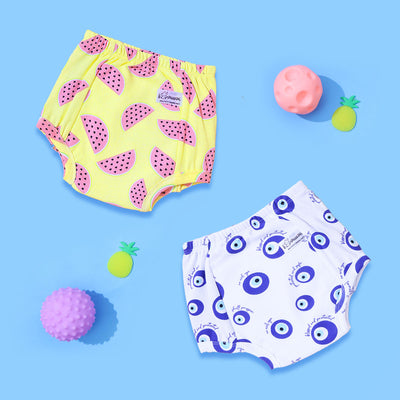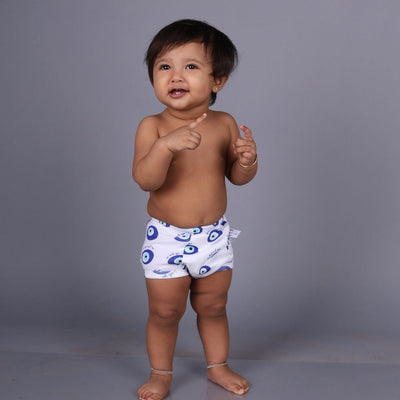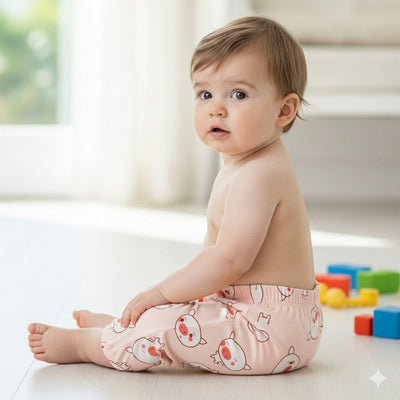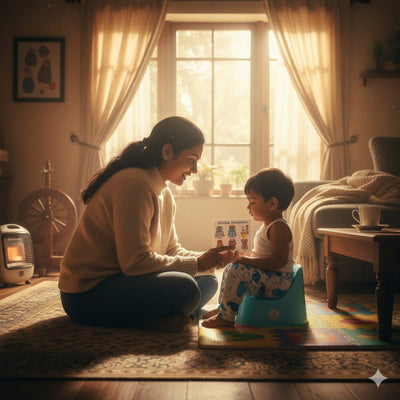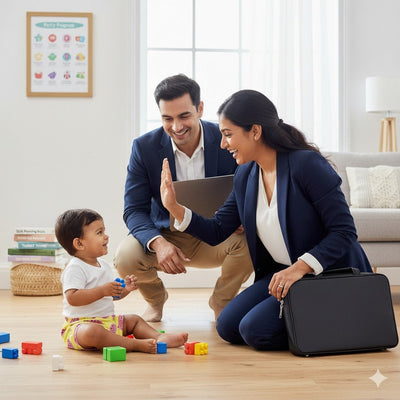How to Choose the Right Size Potty Training Pants for Your Child
Potty training marks an important stage in your child’s growth. It marks the shift from dependence to independence, and much of that success depends on choosing the right potty training pants. While many parents focus on timing or techniques, one commonly overlooked factor is sizing. If the fit is off, even the best training pants won't do their job effectively.
This blog will help you understand how to choose the correct size of potty training pants, what to look for, and how to adjust as your child grows.
Why the Right Fit Matters in Potty Training
When transitioning from diapers to padded underwear, getting the sizing right isn’t just about comfort; it directly impacts your child’s learning, confidence, and hygiene. A well-fitting potty training pants support your child in ways that go beyond just holding small accidents.
1. Comfort for Your Child
Comfort is one of the most crucial factors in potty training success. A pair of pants that are too tight can cause irritation, leave red marks, or even discourage your child from wearing them. On the other hand, loose-fitting pants can feel awkward and insecure, making your toddler constantly fidget or tug at them. When the pants fit just right, your child can move freely, sit comfortably, and focus on the learning process without any physical discomfort. The smoother the experience, the more positive your child’s attitude will be toward using the toilet.
2. Improved Independence
A big part of potty training is teaching your toddler how to take charge of their own routine. Pants that are easy to pull up and down help them practice dressing skills and reduce the need for constant parental help. This independence builds confidence and helps toddlers feel more in control of their bodies. If the training pants are too tight or difficult to remove quickly, accidents become more likely, not because your child isn't learning, but because the clothing is slowing them down. Choosing a size that supports independence is a win-win for both parents and kids.
3. Accident Control
The main purpose of potty training pants is to provide a safety net during training, especially when your child doesn’t make it to the toilet in time. For this to work properly, the absorbent padding inside the pants must be correctly positioned. Ill-fitting pants can shift the padding out of place, reducing its effectiveness. Loose-fitting pants may cause leaks at the sides or waistband, while overly tight ones may compress the padding, making it uncomfortable and less absorbent. A proper fit ensures that any accidents are contained better, keeping clothes dry and messes minimal.
Key Factors to Consider When Choosing Size
Choosing the right size goes beyond just picking by age. Make sure to look out for the following when selecting a size.:
1. Know Your Child’s Measurements
-
Waist: Measure just above the belly button.
-
Hips: Measure at the broadest point of the hips for the most accurate fit.
-
Thighs: Measure where the leg openings of the pants will sit.
Write these down and compare them with the sizing chart provided by the brand you choose.
2. Understand Sizing Labels
Most padded underwear is sold in size ranges like 1–2 years, 2–3 years, etc. However, every child grows differently. Some 18-month-olds may need a size 2–3, while some 3-year-olds might still fit comfortably in 2–3-year sizes.
3. Look for Stretchy, Flexible Material
Training pants made from stretch cotton or a cotton blend will naturally accommodate growth. Soft elastic bands around the waist and legs help keep the pants secure while remaining gentle on the skin.
4. Weight Guidelines Can Help
Some brands include weight ranges alongside age. If available, this can be a great additional reference point, especially for children who are taller or heavier than average.
Try-and-Test Fit Tips
Once you receive your potty training pants, here's how you can test the fit:
-
Slide-on test: Can your child pull them up and down without help? That’s a good sign.
-
Waistband check: Is the waistband snug but not tight? It shouldn’t leave marks.
-
Leg fit: Do the leg openings gently hug the thighs? This helps prevent leaks.
-
Coverage: Does the padded area cover the bum and stay centered? This is crucial for leak control.
If your child is uncomfortable, or if the pants sag or leave impressions on the skin, consider sizing up or trying a different brand or cut.
How Often Should You Reassess Sizing?
Kids grow fast, especially between the ages of 1 and 4. You should reassess their potty training pant size every 3–4 months. Watch for these signs that it’s time to change sizes:
-
Pants are difficult to pull on/off
-
Visible marks around the waist or legs
-
Frequent leaks despite normal use
-
Sagging or loose fit around the waist
How Many Pairs Should You Buy?
Once you’ve found the right size, you’ll likely need 5–7 pairs of padded underwear for daily use, especially if your child is in the early stages of potty training. You’ll want extras for daycare, bedtime, and travel.
Potty Training Pants vs. Diapers: The Fit Difference
Unlike diapers, potty training pants are designed to feel more like underwear. The idea is to let your child feel wetness briefly to recognize the sensation, while still having a small safety net for accidents. For this reason, a snug fit is more important in training pants than in diapers, where over-absorption masks the signs of wetness.
Final Thoughts
Finding the right size of potty training pants is a crucial step in making your child's potty training journey smoother and more successful. A well-fitting pair ensures comfort, prevents unnecessary leaks, and builds your child’s confidence as they learn to manage on their own. Instead of relying on age alone, take a few moments to measure and assess your child’s unique body shape before purchasing.
If you're looking for thoughtfully crafted, comfortable, and reliable padded underwear, Snugkins offers thoughtfully designed potty training pants that cater to the needs of growing toddlers. Crafted with soft, breathable, and sustainable fabrics, these pants are gentle on sensitive skin while offering just the right amount of absorbency for daily use. The design supports ease of movement, making them ideal for active little ones learning to use the toilet independently. If you're looking for a reliable and parent-approved option for padded underwear, Snugkins is a great place to begin your potty training journey.
FAQs: Choosing the Right Size Potty Training Pants
1. How do I know if my child’s potty training pants fit correctly?
Check for a snug but gentle fit around the waist and thighs. The pants should stay in place during play, not leave marks, and be easy for your child to pull up and down on their own.
2. Should I size up if my child is between sizes?
If your child is in between sizes, it's usually better to size up for comfort and ease of movement. However, make sure the larger size doesn't sag or cause the absorbent padding to shift.
3. How often should I reassess my child’s training pants size?
Recheck sizing every 2–3 months, or sooner if you notice leaks, red marks, or difficulty pulling the pants up and down. Toddlers grow quickly, and what fits last month may not work today.

